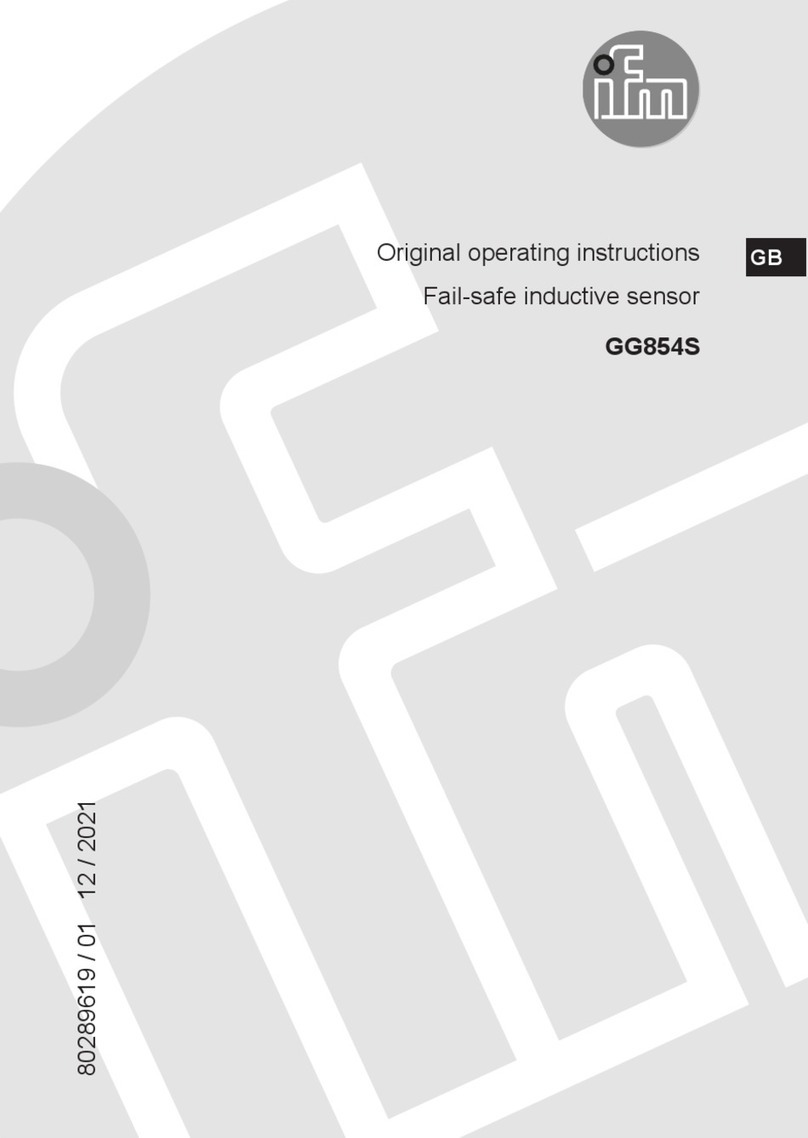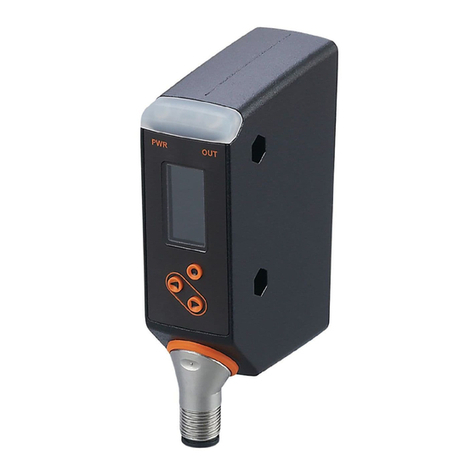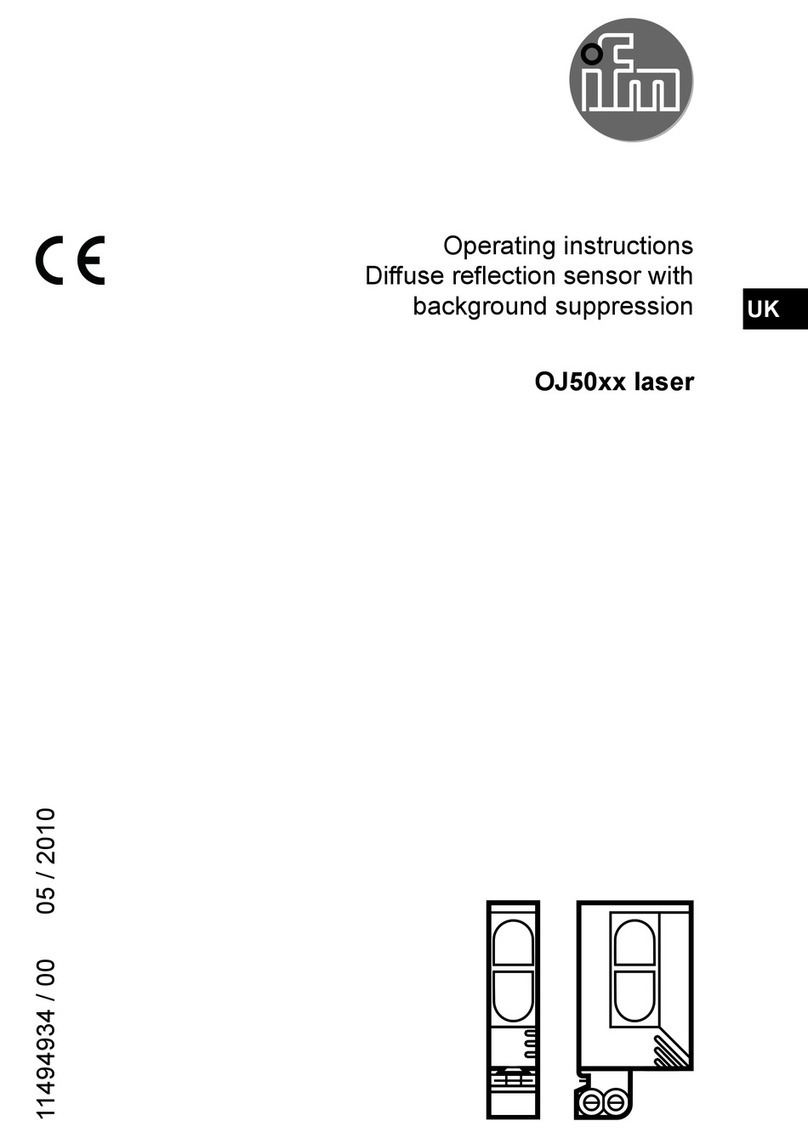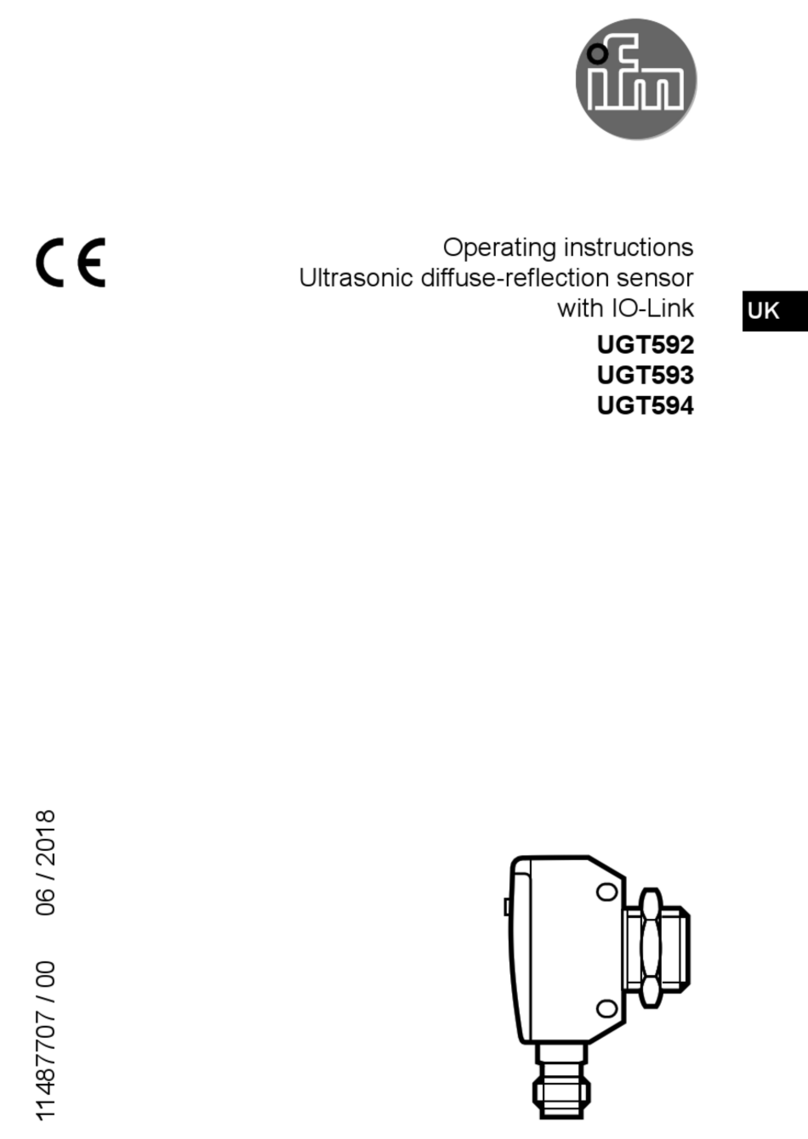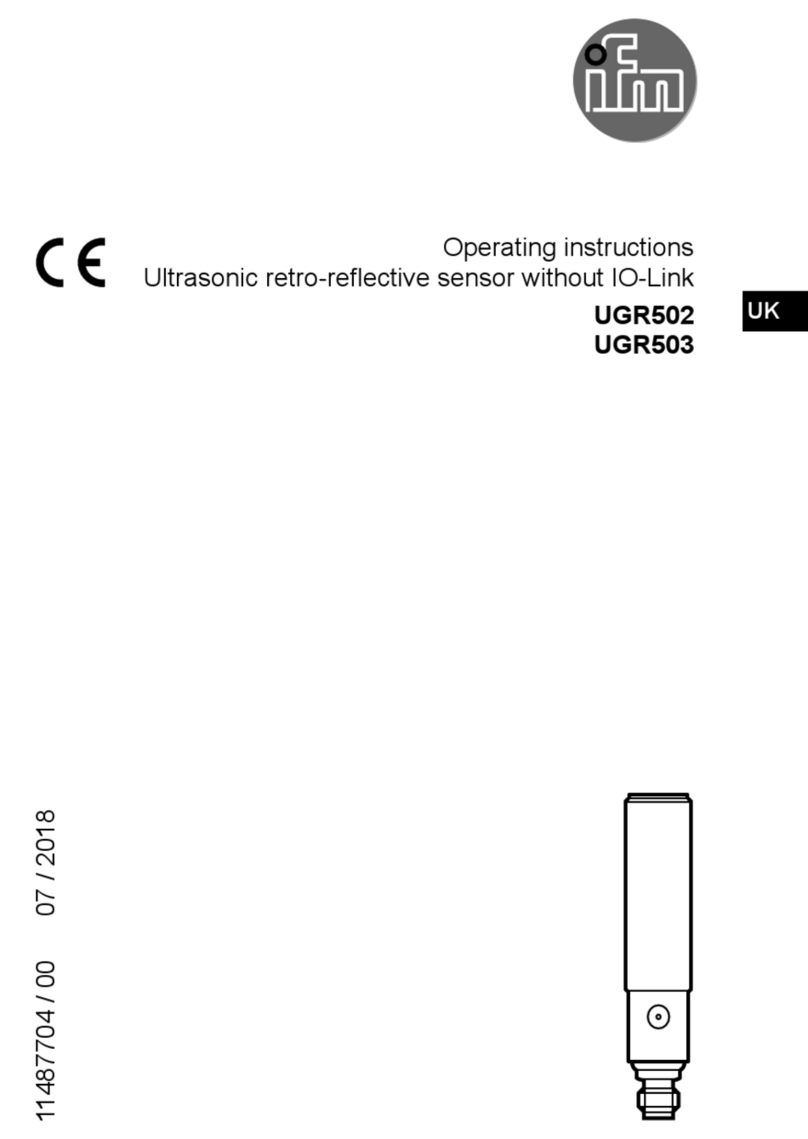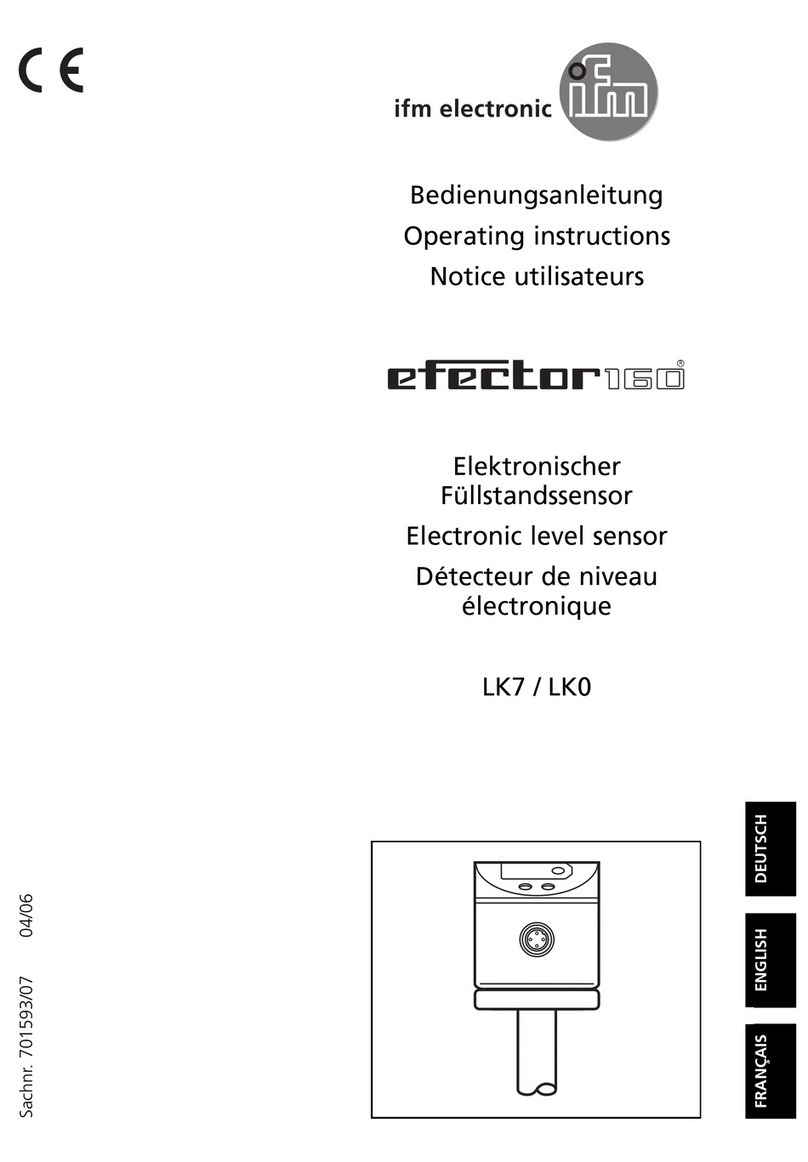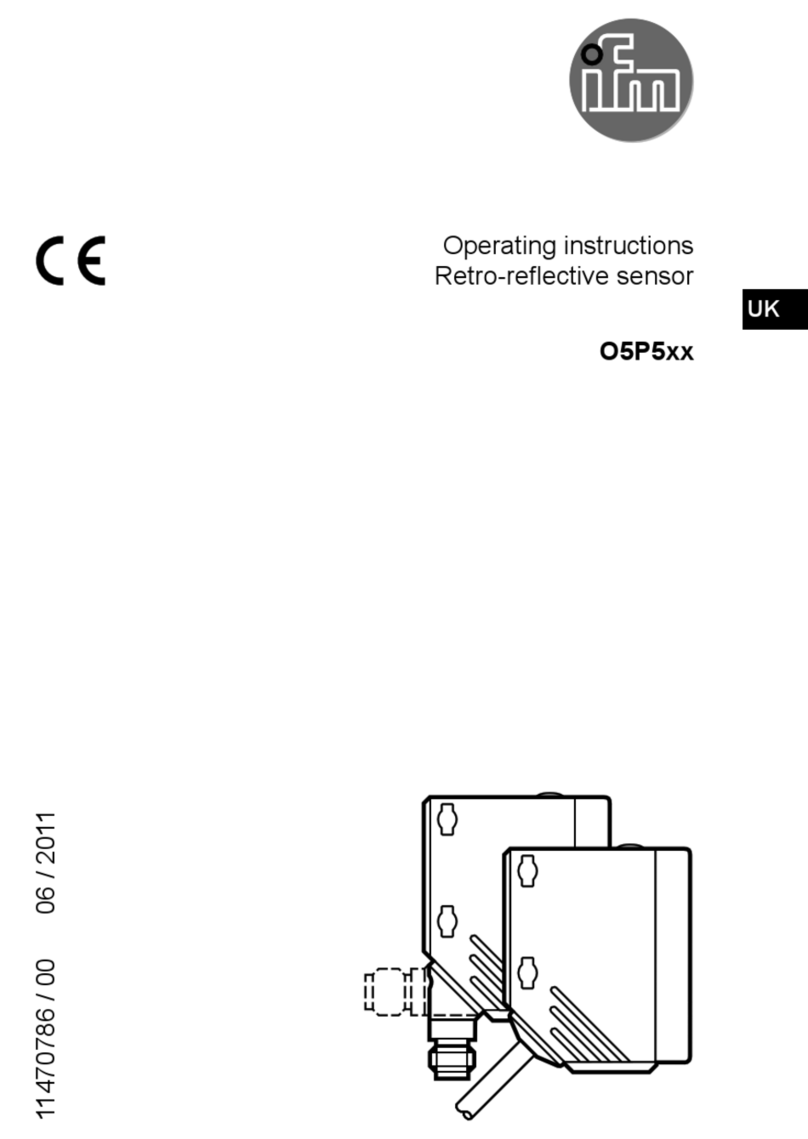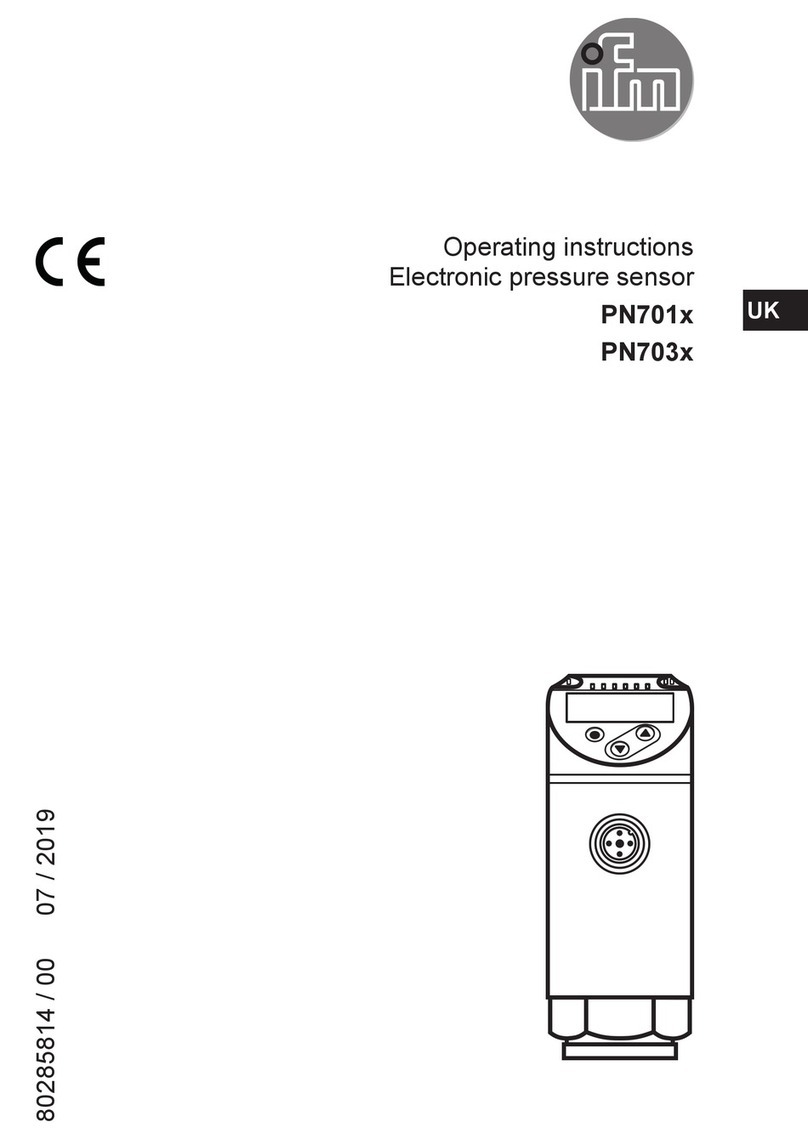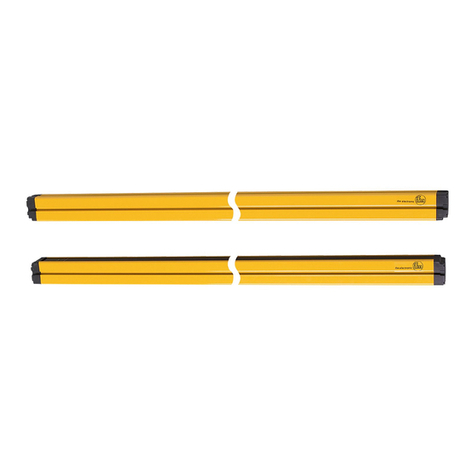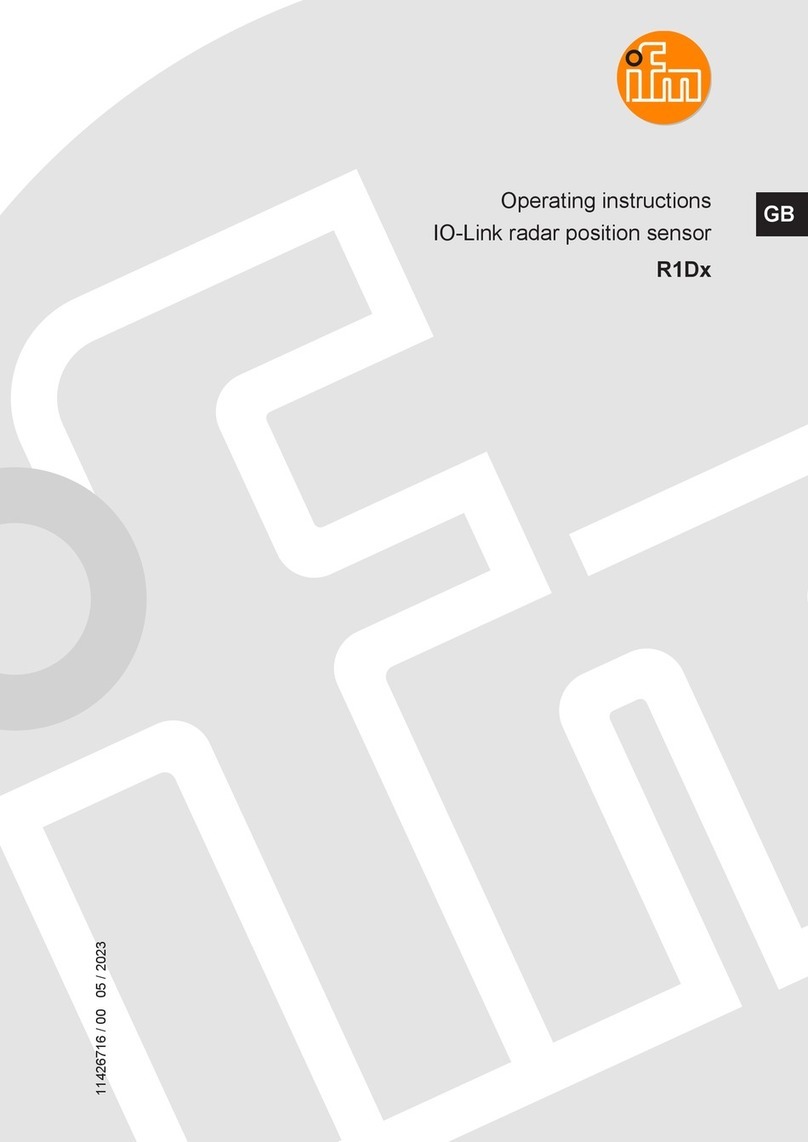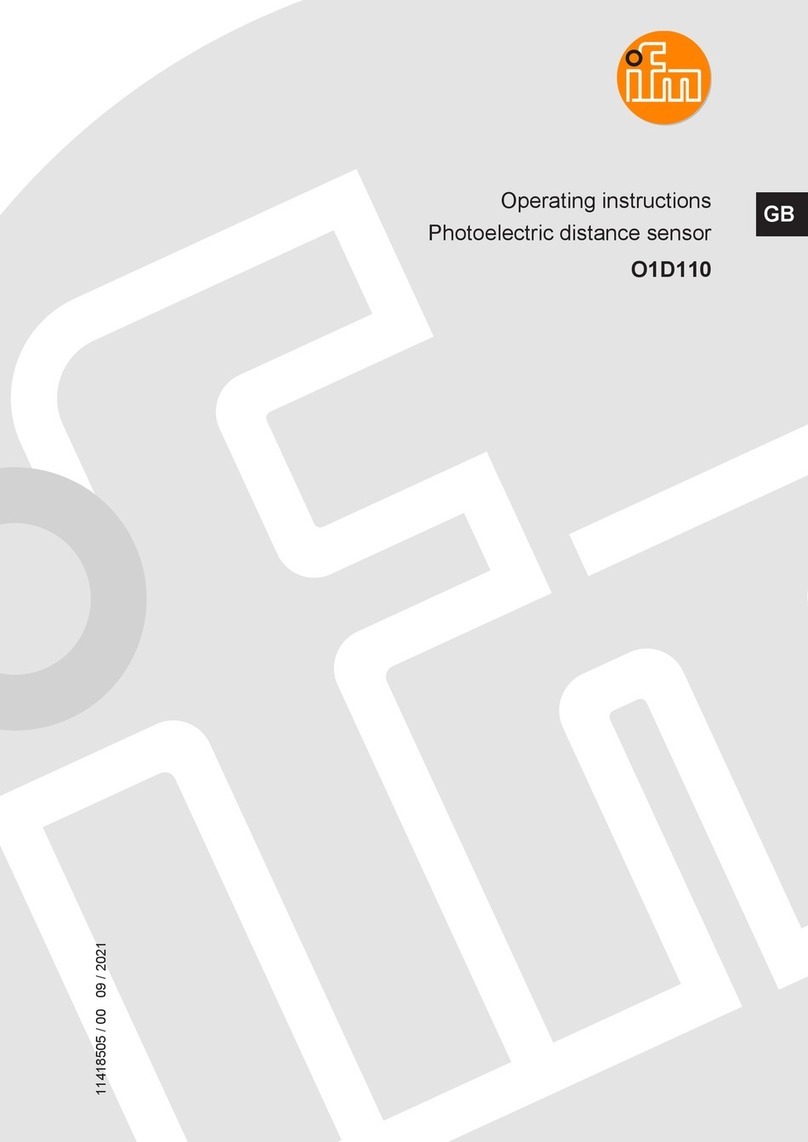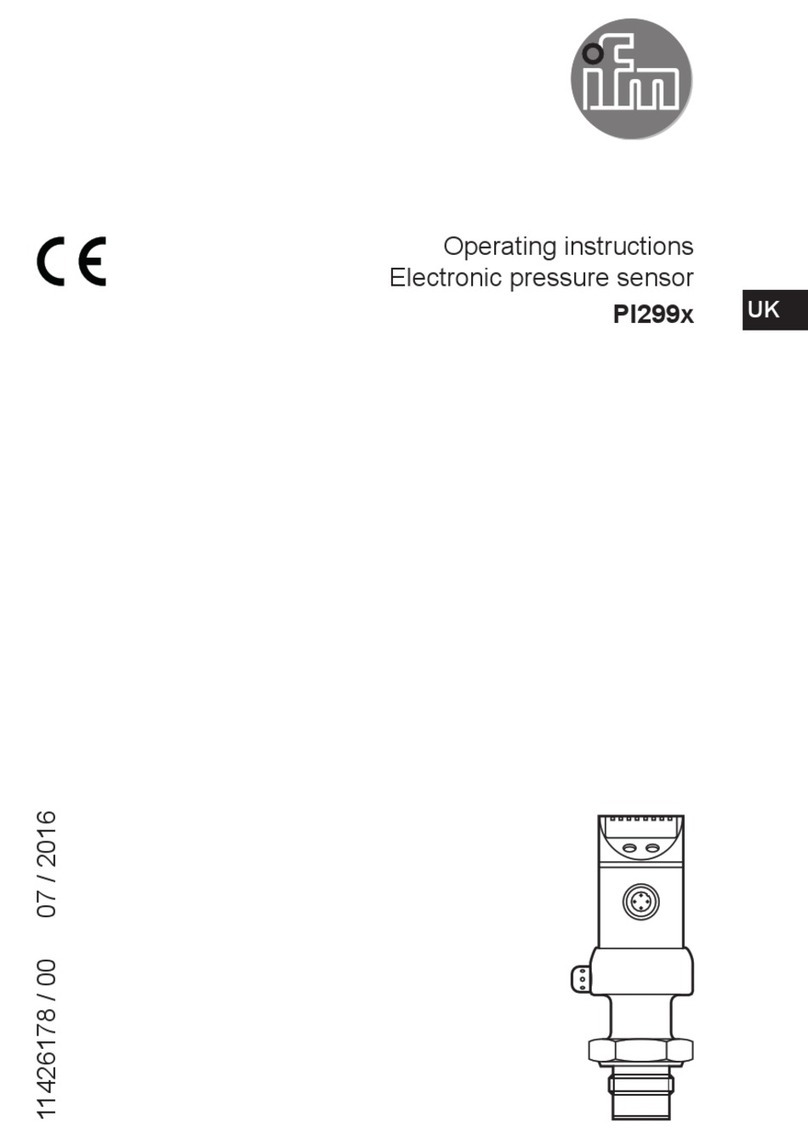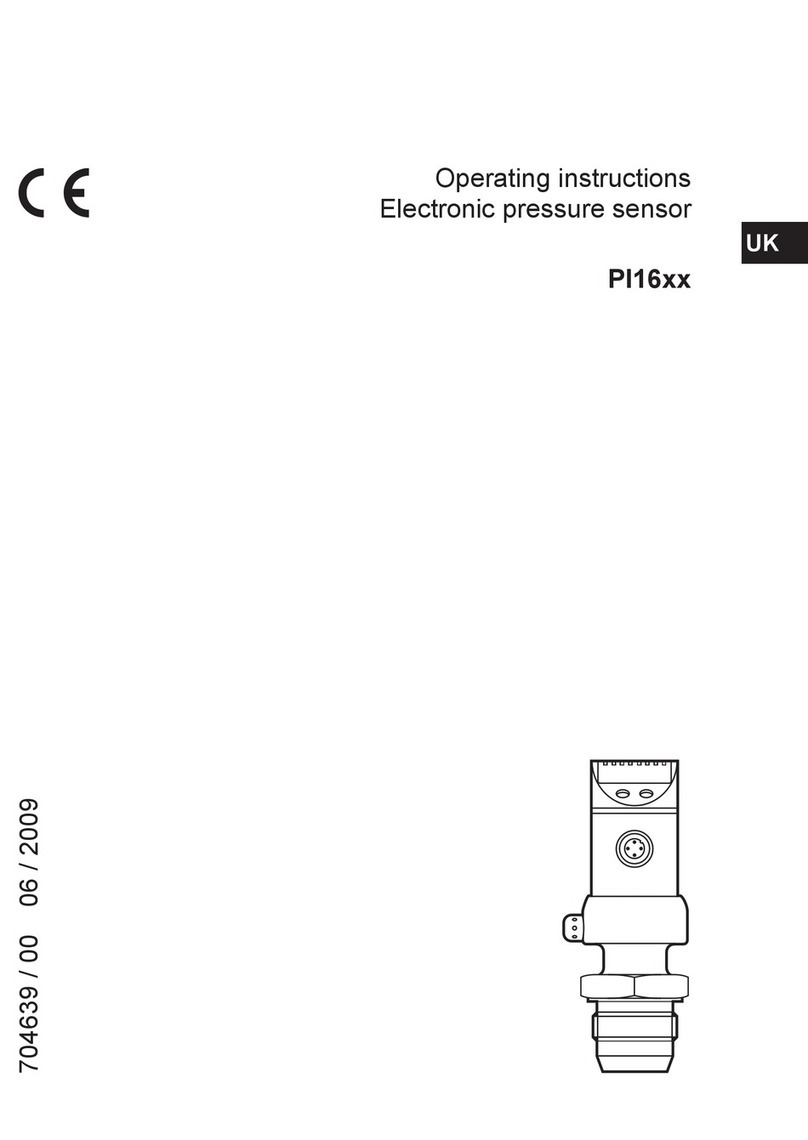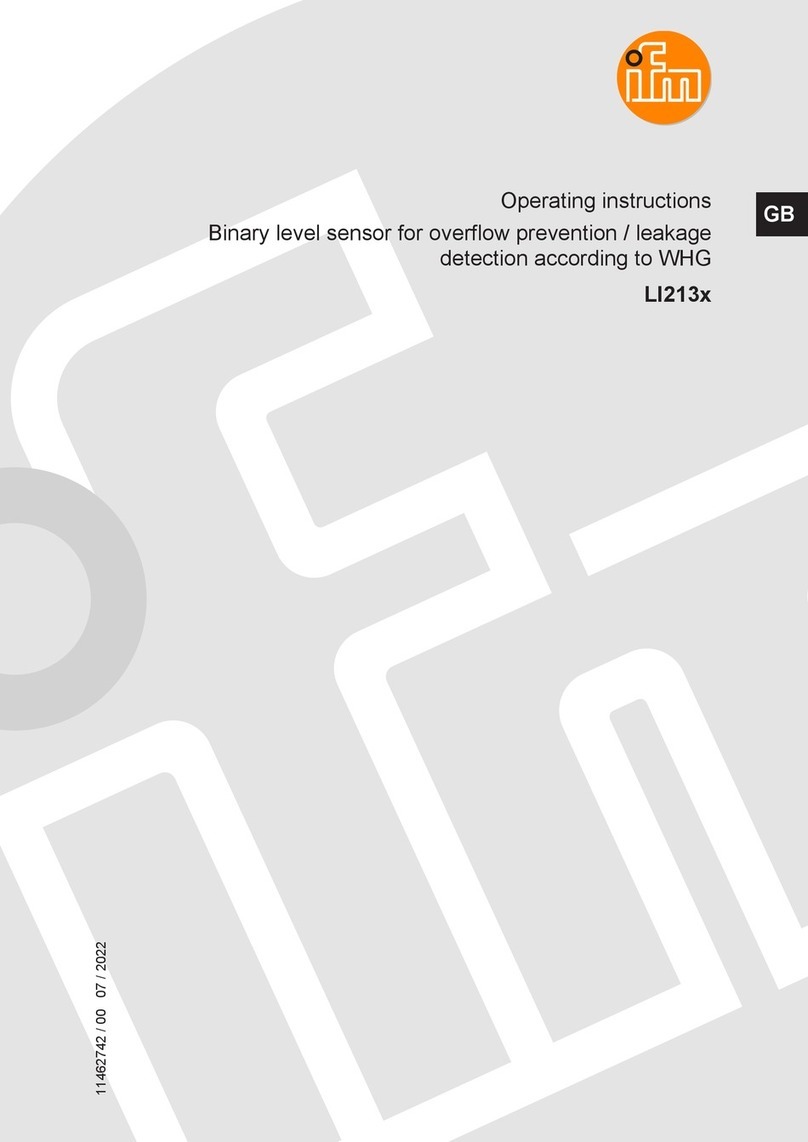
3
UK
10.2.1 Set unit of measurement [uni]...........................................................22
10.2.2 Set offset [OFS] ................................................................................22
10.2.3 Set medium [MEdI] ...........................................................................23
10.2.4 Set overflow prevention [OP] ..........................................................23
10.2.5 Adjust overflow prevention [cOP]......................................................24
10.3 Set output signals ......................................................................................26
10.3.1 Set output function [oux] for OUTx ...................................................26
10.3.2 Define switching limits [SPx] / [rPx] (hysteresis function) .................26
10.3.3 Define switching limits [FHx] / [FLx] (window function).....................26
10.3.4 Set switching delays [dSx] for the switching outputs ........................27
10.3.5 Set switch-off delay [drx] for switching outputs.................................27
10.3.6 Define switching logic [P-n] for the outputs ......................................27
10.3.7 Define response of the outputs in case of a fault [FOUx] .................27
10.3.8 Configure display [diS]......................................................................27
10.3.9 Reset all parameters to factory settings [rES] ..................................27
11 Notes on parameter setting via IO-Link ...........................................................28
12 Operation.........................................................................................................28
12.1 Operation indication...................................................................................28
12.2 Read set parameters .................................................................................29
12.3 Error indications.........................................................................................30
12.4 Output response in different operating states............................................30
13 Technical data..................................................................................................30
13.1 Setting values [OFS]..................................................................................31
13.2 Setting values [OP]....................................................................................31
13.3 Calculation aids [OP] .................................................................................32
13.3.1 Definition "from the cover“ ................................................................32
13.3.2 Definition "from the bottom"..............................................................32
13.4 Setting ranges [SPx] / [FHx] and [rPx] / [FLx] ...........................................33
14 Maintenance / cleaning / change of medium ..................................................34
14.1 Maintenance information for operation without overflow prevention .........34
15 Factory setting .................................................................................................35
16 Applications......................................................................................................36
16.1 Storage tank ..............................................................................................36
16.2 Pumping station.........................................................................................38






